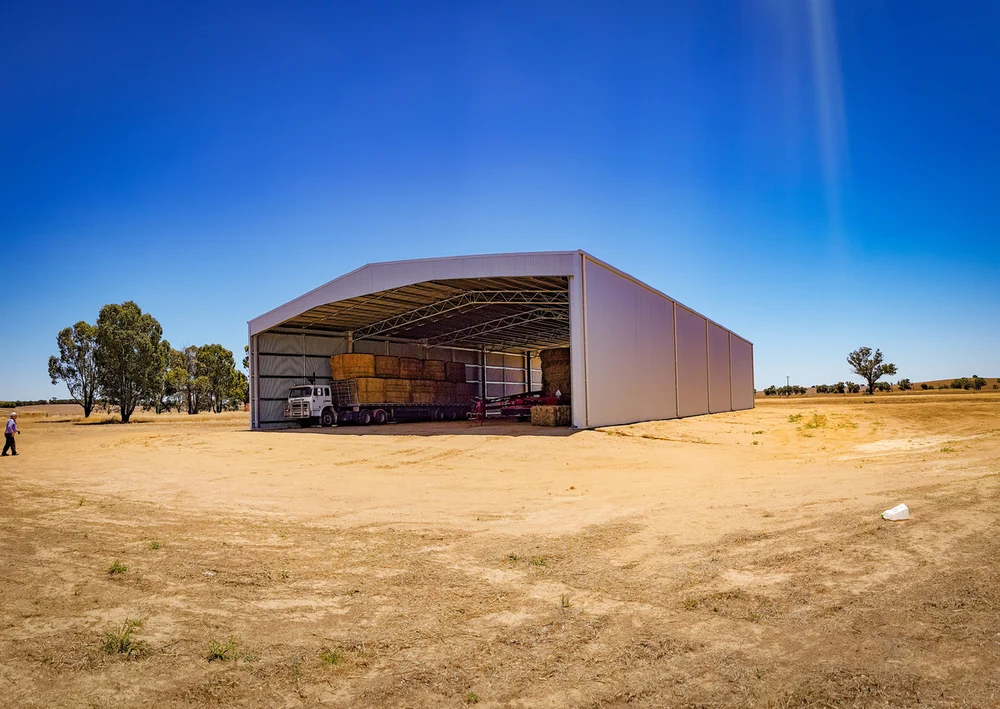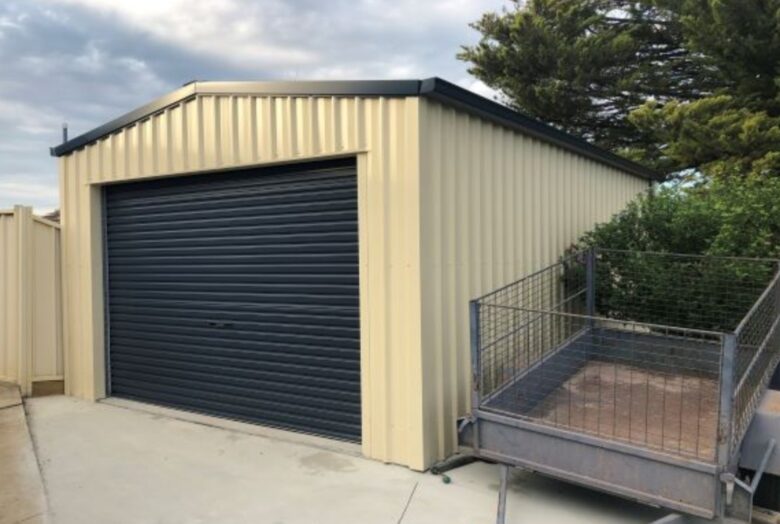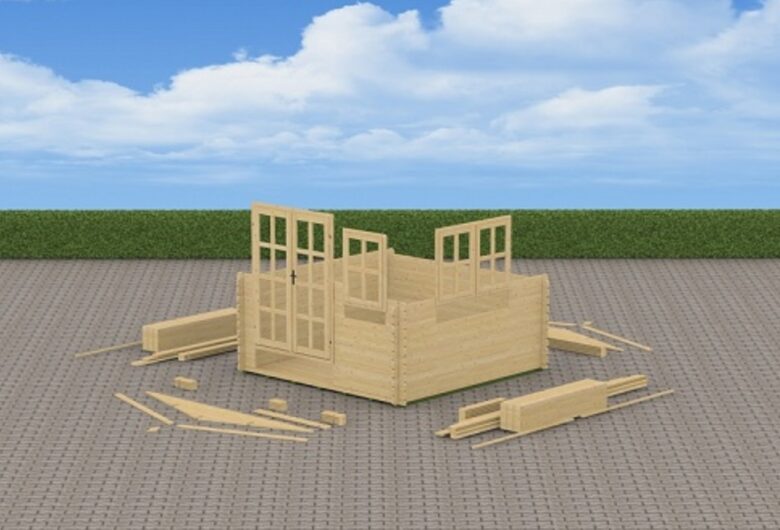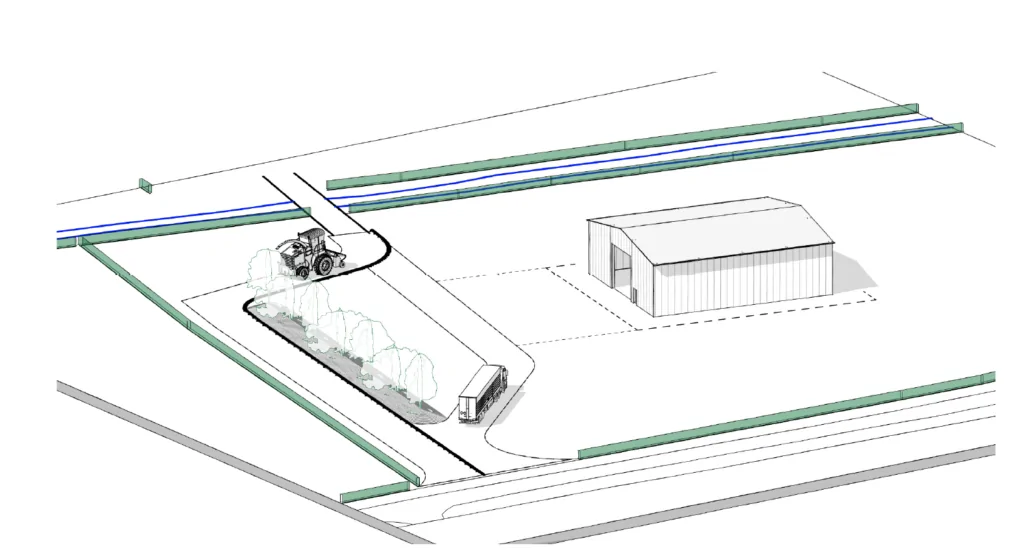Are you looking for an outbuilding to protect or store agricultural equipment, livestock, feed or tools on your Australian farm? With so many different types of sheds to pick from, you may be wondering which one is best for your farm’s setup.
Various shed designs provide numerous features for specific purposes and picking the right one is essential if you want to get the most out of your structure. There are some differences between outbuildings such as hay sheds and American barns and understanding what they are ensures you get the best one for your agricultural needs. Let’s help you make the right investment.
Contents
- How to Pick the Right Shed Design for Your Agricultural Activities
- 1. Identify Why You Need a Shed
- 2. Consider Custom Shed Designs
- 3. Include Optional Extras
- 4. Use Local Solutions to Safeguard Your Investment
- 5. Opt for Easy-to-Assemble Shed Designs
- 6. Work With Professional Shed Manufacturers
- 7. Permit and Regulatory Compliance
- 8. Budget Considerations
- 9. Maintenance and Long-Term Care
- 10. Planning for Future Expansion
- Final Thoughts
How to Pick the Right Shed Design for Your Agricultural Activities
1. Identify Why You Need a Shed

Source: abcsheds.net.au
Sheds have numerous purposes including:
- Storage: Do you need storage for harvested hay or safe facilities to store your products during heavy rainfall or snow conditions? Hay sheds are great for storing feeds while skillion sheds offer safe storage against extremely wet weather.
- Protection: Protect your agricultural assets from theft, vandalism or runaway bushfires with sturdy shed structures.
- Shelter: Do you need a barn to stable horses or are you looking for a design that accommodates livestock overnight or on cold days? American barns make excellent stables while you can use hay sheds to shelter livestock.
Knowing why you need a shed helps you to narrow down your search for the right design.
2. Consider Custom Shed Designs
Consider a custom design if you have specific site conditions that require your shed to be engineered in such a way that it serves its purpose safely. Custom-built sheds are ideal for withstanding the harsh Aussie weather while keeping your agricultural equipment, tools or livestock protected. You’ll need to work with engineers and designers skilled in shed building to have your needs met.
Pick a company that understands the Australian farming environment for a sturdy and durable custom shed design. With a full assessment, the team can accommodate your requirements in terms of layout, features and even aesthetics. They’ll also ensure the right materials are used to construct your shed for long-term quality and satisfaction.
3. Include Optional Extras

Source: firstsheds.com.au
A shed is a shed, right? Not necessarily. These days you have the option to include extra features such as skylights or personal access doors.
Optional extras can turn your shed from something ordinary to one that’s highly effective for your agricultural activities. These include:
- Roller doors for additional security.
- Windows and skylights for brightening the interior.
- Adjustable roof pitches for more storage space or to accommodate large heavy machinery.
- Sliding or glass doors for barns used as staff living quarters.
- Flooring such as concrete for protecting feed or keeping valuable equipment safe from wet or irregular ground areas.
- Insulation to keep your livestock or workers comfortable under hot or cold weather conditions.
With these design elements and installations, you can create a versatile shed that could serve more than one purpose on your farm.
4. Use Local Solutions to Safeguard Your Investment
Are your agricultural activities exposed to dangerous bushfires, extreme weather conditions or geological factors that could impact the structural integrity of your shed? You need local solutions designed to withstand the country’s harsh farming environment.
Shed manufacturers who appreciate these scenarios make use of local solutions such as:
- Australian-made steel that’s strong and durable.
- Materials with Category 2 wind rating for farms likely to be exposed to tropical cyclones.
- Site-specific engineering that focuses on local environmental, geological and regulatory factors.
- Australian-made Bluescope materials such as Colorbond paints that are hard-wearing.
Safeguard your investment with local solutions that tick all the efficiency boxes, while also shielding your valuable agricultural machinery, equipment or livestock from the elements.
5. Opt for Easy-to-Assemble Shed Designs

Source: solidbuildwood.com
Easy-to-assemble sheds that come with simple step-by-step installation guidelines allow you to put together your shed on your own or with your team. This is often a cost-effective solution that appeals to many farmers looking for ways to cut down on building costs.
Another option is to hire the services of a registered installer to assemble your shed. Your shed manufacturer should be able to give you a list of qualified builders to do the job efficiently and safely while meeting local regulatory requirements.
6. Work With Professional Shed Manufacturers
You can purchase a standard farm shed and hope that it meets all your agricultural storage and protection needs. Or, you can hire the services of a professional shed manufacturer who can design the right shed for your specific purposes.
Working with a local shed designer ensures you get all the benefits of quality materials, optional extras, site-specific designs and long-lasting value. When trusting reputable vendors, you’ll also have customer support and technical advice during and after the completion of the project.
7. Permit and Regulatory Compliance

Source: farmersguide.co.uk
When planning your agricultural shed, it’s vital to research and adhere to local building codes and regulations. Different areas may have specific requirements regarding shed construction, including size limitations, setbacks from property boundaries, and the necessity for building permits. Ensuring compliance with these regulations will prevent costly delays or potential legal issues down the road.
8. Budget Considerations
Budgeting is a critical aspect of selecting the right shed design. Assess your overall project budget, encompassing construction costs, materials, and any optional features or customizations. Take into account not only the initial expenses but also ongoing costs for maintenance and repairs.
9. Maintenance and Long-Term Care
To maximize the lifespan of your agricultural shed, establish a routine maintenance regimen. Regularly inspect the shed for signs of wear and tear, addressing any issues promptly to prevent further damage. Cleaning and repainting, if necessary, can safeguard against corrosion and deterioration. Proper maintenance ensures that your shed remains a functional asset on your farm for years to come.
10. Planning for Future Expansion

Source: cartmellbuildings.co.uk
Consider the potential growth of your agricultural operations when selecting a shed design. Assess whether your current needs may evolve, leading to increased storage or shelter requirements. Opt for a design that allows for future expansion or modification to accommodate changing demands. Forward-thinking planning ensures that your shed can adapt alongside the development of your farm, providing lasting value and flexibility.
Final Thoughts
Whether you need a skillion shed, machinery shed, Aussie barn or custom shed, picking the right design is essential for long-term functionality and durability. Use this article to guide you in the right direction so you factor in all the essential considerations when planning your next shed.
